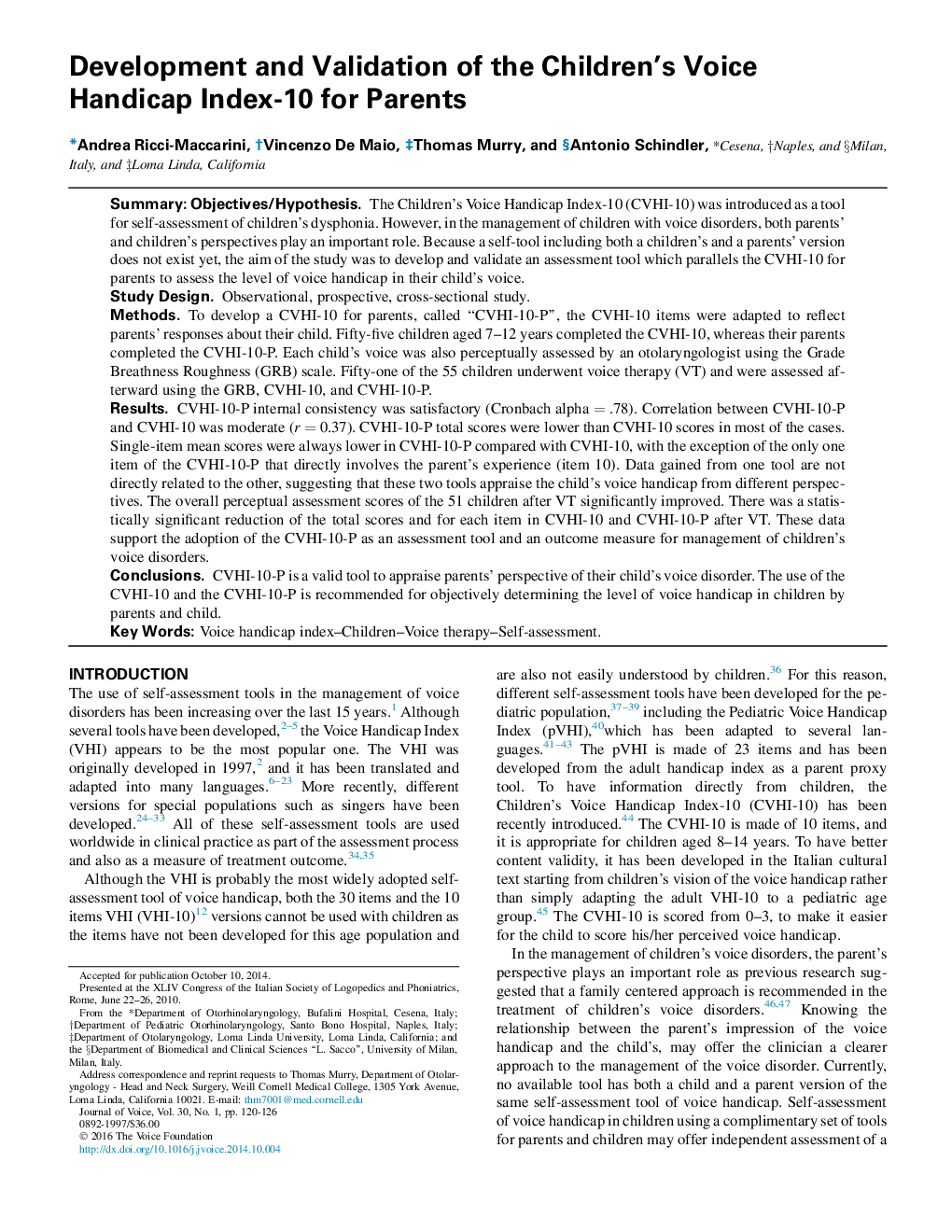| کد مقاله | کد نشریه | سال انتشار | مقاله انگلیسی | نسخه تمام متن |
|---|---|---|---|---|
| 1101258 | 953561 | 2016 | 7 صفحه PDF | دانلود رایگان |
SummaryObjectives/HypothesisThe Children's Voice Handicap Index-10 (CVHI-10) was introduced as a tool for self-assessment of children's dysphonia. However, in the management of children with voice disorders, both parents' and children's perspectives play an important role. Because a self-tool including both a children's and a parents' version does not exist yet, the aim of the study was to develop and validate an assessment tool which parallels the CVHI-10 for parents to assess the level of voice handicap in their child's voice.Study DesignObservational, prospective, cross-sectional study.MethodsTo develop a CVHI-10 for parents, called “CVHI-10-P”, the CVHI-10 items were adapted to reflect parents' responses about their child. Fifty-five children aged 7–12 years completed the CVHI-10, whereas their parents completed the CVHI-10-P. Each child's voice was also perceptually assessed by an otolaryngologist using the Grade Breathness Roughness (GRB) scale. Fifty-one of the 55 children underwent voice therapy (VT) and were assessed afterward using the GRB, CVHI-10, and CVHI-10-P.ResultsCVHI-10-P internal consistency was satisfactory (Cronbach alpha = .78). Correlation between CVHI-10-P and CVHI-10 was moderate (r = 0.37). CVHI-10-P total scores were lower than CVHI-10 scores in most of the cases. Single-item mean scores were always lower in CVHI-10-P compared with CVHI-10, with the exception of the only one item of the CVHI-10-P that directly involves the parent's experience (item 10). Data gained from one tool are not directly related to the other, suggesting that these two tools appraise the child's voice handicap from different perspectives. The overall perceptual assessment scores of the 51 children after VT significantly improved. There was a statistically significant reduction of the total scores and for each item in CVHI-10 and CVHI-10-P after VT. These data support the adoption of the CVHI-10-P as an assessment tool and an outcome measure for management of children's voice disorders.ConclusionsCVHI-10-P is a valid tool to appraise parents' perspective of their child's voice disorder. The use of the CVHI-10 and the CVHI-10-P is recommended for objectively determining the level of voice handicap in children by parents and child.
Journal: Journal of Voice - Volume 30, Issue 1, January 2016, Pages 120–126
